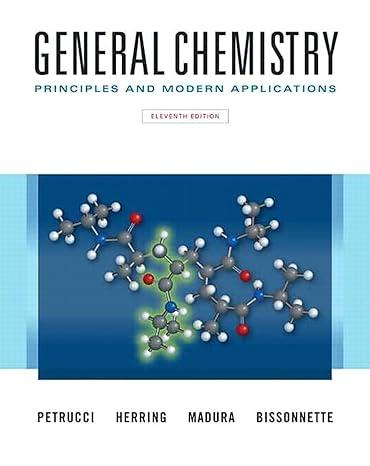Nearly all mercury(II) compounds exhibit covalent bonding. Mercury(II) chloride is a covalent molecule that dissolves in warm
Question:
Nearly all mercury(II) compounds exhibit covalent bonding. Mercury(II) chloride is a covalent molecule that dissolves in warm water. The stability of this compound is exploited in the determination of the levels of chloride ion in blood serum. Typical human blood serum levels range from 90 to 115 mmol L–1. The chloride concentration is determined by titration with Hg(NO3)2. The indicator used in the titration is diphenylcarbazone, C6H5N“NCONHNHC6H5, which complexes with the mercury(II) ion after all the chloride has reacted with the mercury(II). Free diphenylcarbazone is pink in solution, and when it is complexed with mercury(II), it is blue. Thus, the diphenylcarbazone acts as an indicator, changing from pink to blue when the first excess of mercury(II) appears. In an experiment, Hg(NO3)2(aq) solution is standardized by titrating 2.00 mL of 0.0108 M NaCl solution. It takes 1.12 mL of Hg(NO3)2(aq) to reach the diphenylcarbazone end point. A 0.500 mL serum sample is treated with 3.50 mL water, 0.50 mL of 10% sodium tungstate solution, and 0.50 mL of 0.33 M H2SO4(aq) to precipitate proteins. After the proteins are precipitated, the sample is filtered and a 2.00 mL aliquot of the filtrate is titrated with Hg(NO3)2 solution, requiring 1.23 mL. Calculate the concentration of Cl–. Express your answer in mmol L–1. Does this concentration fall in the normal range?
Step by Step Answer:

General Chemistry Principles And Modern Applications
ISBN: 9780132931281
11th Edition
Authors: Ralph Petrucci, Jeffry Madura, F. Herring, Carey Bissonnette





